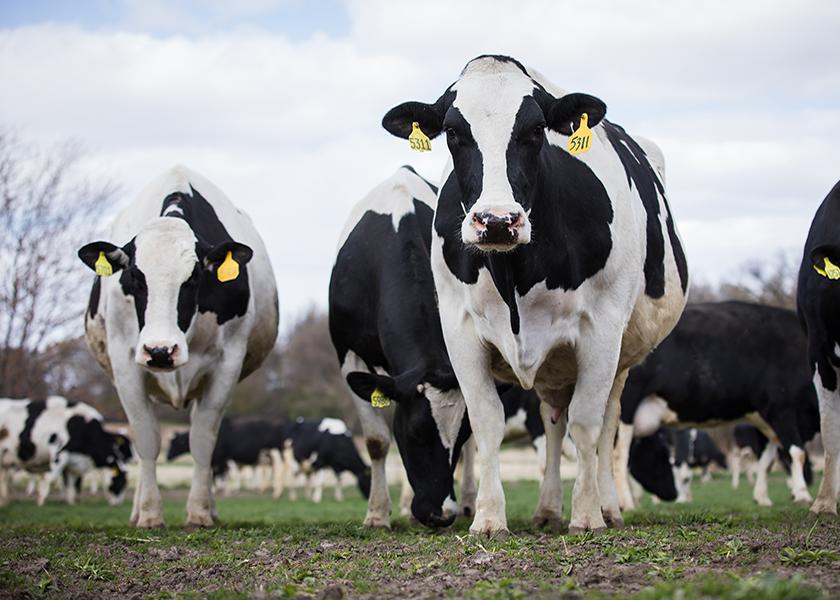Optimal Lying Times and Immediate Treatment Combat Lameness

Lameness is a costly problem for dairy farms that leads to reduced milk production, fertility challenges and higher cull rates. Dr. Gerard Cramer, DVM, DVSc, Associate Professor with the Department of Veterinary Population Medicine of the University of Minnesota, shared practical strategies for detecting, treating and managing hoof health issues in an episode of PDPW’s The Dairy Signal.
During the episode entitled “Reducing Lameness in Dairy Cattle,” Dr. Cramer discussed several strategies producers can employ to enhance hoof health. Ensuring cows spend enough time lying down and promptly treating lame cows topped the list.
“The biggest thing we can do is make sure the cow has every opportunity to lay down for 12 hours – that’s the ultimate goal,” Dr. Cramer said. “Herds that do that will have a very low number of new cases.”
Dr. Cramer also emphasized treating lame cows as soon as they’re discovered rather than waiting until the hoof trimmer is scheduled to trim. “With early detection (and treatment) we’ll have less lame cows,” Dr. Cramer said, “and that equals less negative impact.”
The lameness issue is not a new one. In Dr. Cramer’s view, the industry can benefit from more information-sharing between all consultants on a dairy’s hoof health team, including the hoof trimmer, veterinarian and nutritionist.
Dr. Cramer framed the issue for The Dairy Signal viewers, “Why aren’t we making progress on this issue? It’s because we’re too ‘siloed.’ Let’s get all our experts to the table with one another. They all want to help your team reach your goals.”
Central to mitigating the negative impact of lameness is implementing sound record-keeping systems.
“You can’t manage what you can’t measure,” he said. “Find a way to put numbers to hoof health so that at the end of the year, you can say ‘I had x number of cows with ulcers and x number of cows with digital dermatitis.’”
During the 60-minute program, Dr. Cramer highlighted several other hoof health findings and management strategies, including the correlation between lameness and inflammatory events such as metritis, displaced abomasums and metritis, as well as scheduling hoof trimming based on one of four groups in which a cow can be categorized. In addition, his thoughts on boots versus blocks, body condition score, foot-bath lengths and monitoring, and more, can all be viewed or downloaded by clicking here.
The Dairy Signal airs every Tuesday, Wednesday and Thursday from noon to 1 p.m. CT, and viewers tuning in live can ask questions of the presenters. All episodes are available here free and downloadable in audio and video format.
Dairy producers eager for more information on combatting lameness have an opportunity to attend an interactive on-farm workshop hosted in three locations this summer. The PDPW Hoof Health Workshops will be held July 20 in Waupaca, Wisconsin, July 28 in Frankfort, New York, and August 3 in Lake Norden, South Dakota. Developed for herd managers, hoof trimmers, veterinarians and nutritionists, the workshops will feature Dr. Cramer as well as Karl Burgi, hoof trimmer, hoof-care consultant and instructor; and Roger Olson, dairy account manager with Zinpro Corporation. Learn more at pdpw.org/programs.
About PDPW
Professional Dairy Producers® (PDPW) is the nation's largest dairy producer-led organization of its kind, focusing on producer professionalism, stakeholder engagement and unified outreach to share ideas, solutions, resources, and experiences that help dairy producers succeed.
Watch The Dairy Signal™ at 12:00-1:00 P.M. CT each Tuesday, Wednesday and Thursday.
PDPW Hoof Health Workshop
July 20, Brooks Farms, Waupaca, WI
July 28, Entwistle Bros. Farm, LLC, Frankfort, NY
Aug 3, Drumgoon Dairy, Lake Norden, SD







